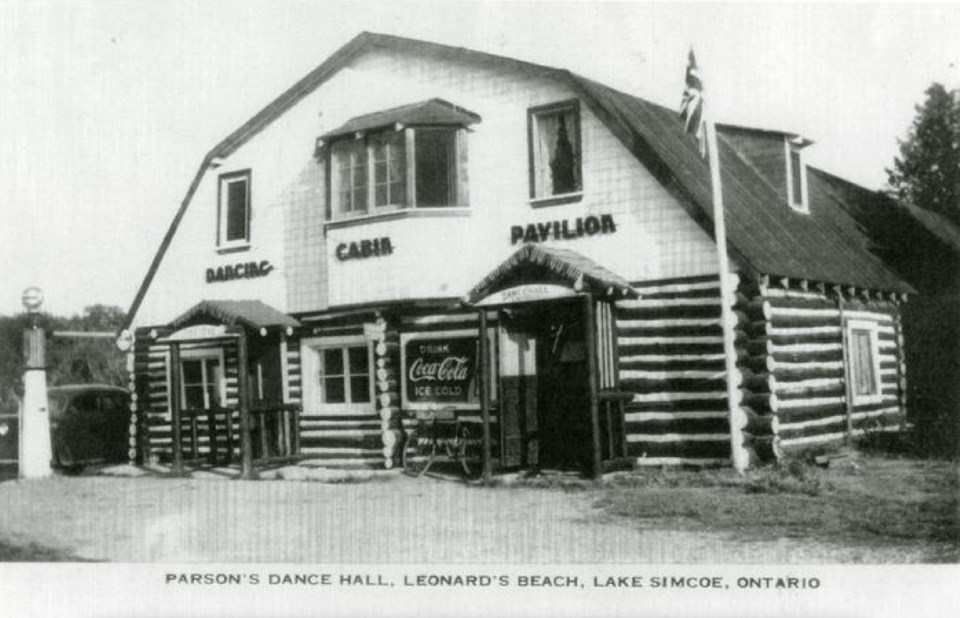The place was buzzing with energy. Every evening throughout the summer, for decades, hundreds of young people would pile into the building to dance chockablock into the wee hours. It was exhilarating.
Summer evenings at Parson’s Dance Hall were the stuff of memories.
The Innisfil landmark of more than two decades began humbly enough. In the early 1930s, Toronto residents George and Peggy Parsons wanted to flee the city and begin a new life in Innisfil. The couple bought Lot 25, Concession 10, and over one busy summer, George, accompanied by his father, would venture up to Innisfil on weekends to begin working on their dream. Living in a tent, the men cleared land and built a small home. By autumn, George and Peggy made the move north full-time.
The couple had big plans. They saw how Leonard’s Beach, located just down the road, flooded the area with vacationers every summer. Why not profit from it? The couple built a snack bar adjacent to their home and spent summer months serving a seemingly endless stream of sodas, ice cream, and hot dogs. In the winter, George cut timber for sawmills and worked in Lake Simcoe’s thriving ice industry.
By 1938, they were ready to begin phase two of their plans: building a dance hall. Concrete foundations were poured, and George cut timber for the log building from their property. By the summer of 1939, the dance hall was ready.
The Second World War erupted that autumn. Many businesses suffered as men went overseas and rationing came into effect. War had the opposite effect on Parson’s Dance Hall. Every weekend, truckloads of young soldiers from Camp Borden went to the dance hall for some entertainment. Young girls, some locals, others from as far away as Toronto, joined them. The dance hall boomed from the get-go.
George and Peggy were not yet satisfied. In the early 1950s, they added a two-lane, five-pin bowling alley and an outdoor rink that offered roller-skating in the summer and ice skating in the winter. It was around this time the dance hall was renamed. Henceforth it would be Peggy’s Dance Hall, or just Peggy’s.
The 1960s saw more changes. Until then, music had been provided by records or radio. Now, young people began demanding live musicians, so performers were brought in. The most famous singer to play at Peggy’s was Gordon Lightfoot, then a part of a duo called the Two Tones with Terry Whelan. Some nights, as many as 600 revellers were packed into the building.
The popularity of Peggy’s Dance Hall was a double-edged sword of sorts. Some locals complained of the lineup of parked cars stretching down the roads and the loud music that carried until the wee hours. Parents thought the place was a bad influence with its rock ’n’ roll music, carousing, and reputed under-the-table alcohol.
In 1972, an aging Peggy and George decided to rent the dance hall out so they could enjoy a placid retirement. Unfortunately, mismanagement saw it decline in popularity over the next few years and, by the end of the decade, it had closed.
The dance hall ended its days as a corner store before the weary building was torn down in the late 1980s.
All that remains is nostalgia.
If you have memories of Parson’s Dance Hall, feel free to reach out to the author at [email protected].



